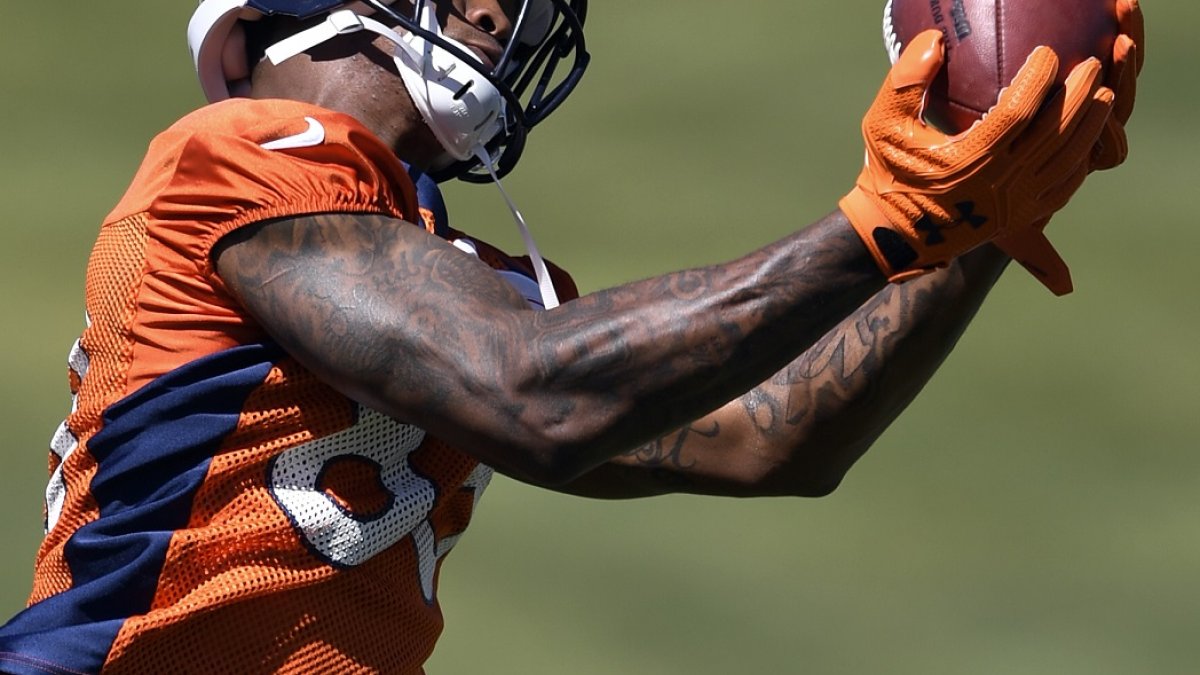Our consensus top-200 PPR fantasy rankings are hot off the (Word)press this week. There’s always one apple that falls far from the tree, and apparently, that apple was me.
While the assignment was simply to compile our top-200 PPR rankings, a couple of themes stood out in my rankings that also tend to show up in how I approach fantasy drafts. At the end of the day my draft strategy is no different than yours: to find value and, ultimately, hoist that beautiful fantasy trophy.
Upside over status quo
We have laws in the workforce to prohibit age discrimination against older job candidates, but there are no such laws in fantasy football. After perusing our consensus top-200 PPR rankings, I am, it would appear, an age discriminator. Compared to my peer rankers here at PFF, I’m guilty of being perhaps a bit too partial to youth and upside in my top-200 (dynasty is kind of my forte here, after all).
Ultimately, each of us relies on research as well as gut instincts when it comes to fantasy draft strategy. We all seek out some combination of supporting data, opportunity, and circumstance to get in on the ground floor with potential breakout players. But are you willing to forgo the market price of an established fantasy starter with a presumably higher floor but perhaps a lower ceiling? If so, then you might be an upside drafter. Are you willing to swing for the fences and miss if it means avoiding winding up with a boring team that finishes safely in fourth place? If so, then you might be a redn — er, upside drafter.
Let’s cherry pick an example using PFF data: Demaryius Thomas comes in at No. 25 (WR14) on our consensus top-200, whereas I was by far the lowest, at No. 57 overall (WR25), yet still a back-end WR2 or a high flex. Is that really so crazy? You be the judge.
Thomas has not missed a game since 2011 while accumulating an average of 153 targets per season. In other words, pretty much an ideal WR2 target in PPR. But there is a clear downward trajectory here. Thomas finished last season as the WR16 in PPR after finishing WR11 in 2015 and top-six each of the previous three seasons. He’ll turn 30 in December, is coming off his poorest statistical output since before he became a household fantasy name, and will be catching passes from either Trevor Siemian or Paxton Lynch. Further, Thomas has seen his PFF grade decline steadily since 2012 (he was No. 27 last season) while both his touchdown totals and average yards per route run have dipped each year since 2014. Frankly, if he’s my WR2 at the cost of a third-round pick, then I already hate my fantasy team.
Similarly, others can have 32-year-old Jordy Nelson at his first-round price tag and hope he defies what history has proven about receivers his age. He still made the cut as a WR1 on my list, but not before in-their-prime options like Amari Cooper or Alshon Jeffery. The other rankers all had T.Y. Hilton in the 10th-13th range (WR6) coming off a career year as the No. 5 WR. For me, he’s still a fringe WR1/WR2, which is right around where he wound up the previous four seasons. Of course, I’m also much higher on a slimmed-down Donte Moncrief (WR20 vs. WR34 consensus), who highlighted the Colts’ offseason program and will look to capitalize when Hilton draws double coverage. I also stand by my post-hype sleeper candidates, like 2015 first-rounder DeVante Parker, who in no way should be outside the top-40 WRs now that he’s finally healthy.
Running backs at the top
In terms of running back strategy for PPR, our consensus rankings have seven RBs in the top 15 and 15 inside the top 35 (I have eight RBs in the top 15, and 16 inside the top 35). The reason we’re all in line here is because going back to the start of the century, on only a couple of occasions has the top overall PPR scorer been a receiver. Last year’s WR1 for example, Antonio Brown, was only No. 8 overall in PPR, behind three RBs. In fact, I recently outlined how Brown is trending downward in terms of targets per route, hence why I have him ranked lowest in our top-200, at No. 7 overall (WR4).
Historically, as our Tyler Loechner has researched, workhorse-type RBs have seen their production drop off during their age-29 season. To that end, my colleagues can have LeSean McCoy (29) in the middle of the first round or DeMarco Murray (29) in the middle of the second. I’d rather push my chips behind a slimmed-down Jordan Howard or a rejuvenated Todd Gurley to bounce back in new coordinator Sean McVay’s more innovative scheme.
One final note of caution: several pass-catching specialists who finished in the RB2 mix last season will likely see lesser roles in 2017, such as Theo Riddick (Ameer Abdullah) or Darren Sproles (LeGarrette Blount) or James White (everyone). After all, Blount caught seven passes in 2016 and finished as a top-10 fantasy RB even in PPR.



 © 2025 PFF - all rights reserved.
© 2025 PFF - all rights reserved.